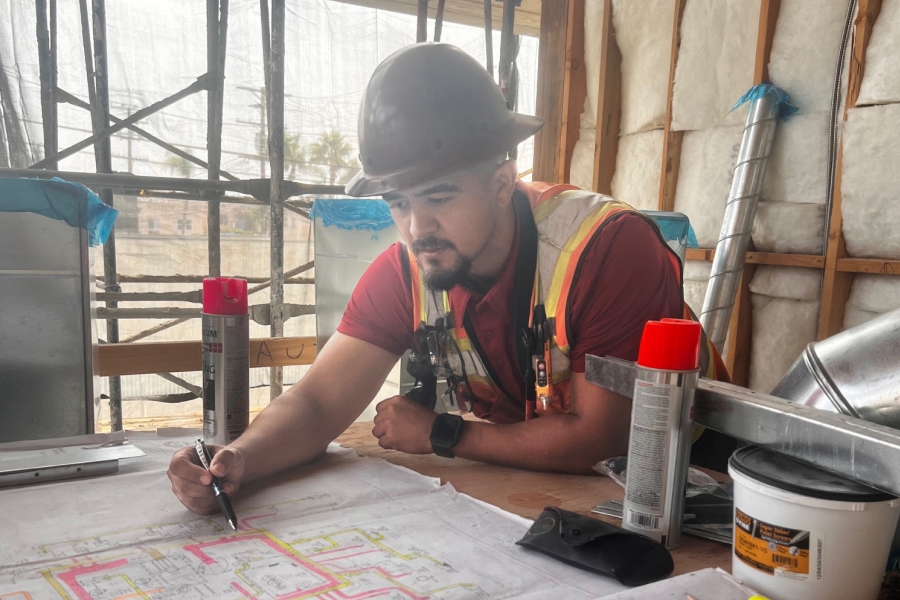Jeff Kim is an associate professor at the School of Architecture, Design and Construction at Auburn University, his alma mater.
Kim returned to teach at Auburn after 20 years in industry, where he did preconstruction services and project management for a mid-sized construction management firm. He also has extensive experience in construction-related information technology and the implementation of new technologies to the practice of construction management. Kim’s research has focused on improving spatial visualization ability in construction management students through the use of augmented reality.
In addition to teaching, Kim remains focused on volunteer causes that further construction education. He is the chairman of the Industry Advisor Committee for a construction management program in Atlanta, Georgia, and acts as a lead mentor for the ACE Mentor program. Kim also facilitates program activities for SkillsUSA and the Construction Education Foundation of Georgia.
Bluebeam spoke with Kim about the changing nature of AEC technology and how he uses Revu with his students and more. Edited excerpts follow.
Bluebeam Blog: What do you think is the biggest challenge facing future AEC professionals?
Kim: One of the biggest challenges for AEC professionals is the automation of processes that we can’t yet imagine. Design is seeing some automation, and so architects are concerned about being “replaced.” However, in instances such as these, it’s more about accepting that some processes do need automation, so that practitioners can focus their time and effort on higher order problem-solving.
Bluebeam Blog: How has technology changed the AEC industry?
Kim: Technology has done some amazing things for this industry, but it has sometimes made it difficult to analyze data. Tools like Revu have some powerful features that allow students to extract, compare and report on data within the documents, which saves time.
Bluebeam Blog: How do you use Revu in the classroom?
Kim: I use Revu in almost all of my classes in one form or another. In my construction technology class, we go over the basics of Revu—combining documents, editing documents and annotations. Later, we focus on activities that make use of comparing documents, estimating and using Revu in construction workflows.
In some of my more advanced classes, I expect the students to show me that they have mastered their technology and can use it to save time and produce great results. After all, that’s what their future employers will expect.
Students like using Revu. Because the workflows in Revu match closely to construction workflows, they can see results quickly. That makes sense to them and directly benefits their work. I’ve also used the mobile version of Revu, and the consistency between mobile and desktop is important to them. Lastly, they like to work with a company that is willing to offer free software licenses during their use in classes—they like to save money.

Bluebeam Blog: What other technologies do you consider essential for people who plan to work in AEC?
Kim: BIM is almost standard in commercial construction at this point, and those that have not accepted this are starting to struggle. Other technologies such as AR and VR are shaping the way we visualize data on the project, and I expect that we will see some important new developments here.
Bluebeam Blog: How has your view of technology in the AEC workplace evolved over the years?
Kim: Technology is all around us, and it isn’t just about the Internet, computing and mobility. What I’ve seen that inspires me is how practitioners make use of technology in sometimes unconventional ways to solve simple problems that have a big return.
It’s also interesting how many construction management companies out there now have “innovation” departments. This is an important sign that the building industry is taking a different approach toward the need for technology and innovation.
I like technology, but I wouldn’t classify myself as a bleeding-edge adopter. Great stories in experimentation with technology seem to be what makes headlines. Like I’ve said, I’m most impressed by those that can use the simplest of technologies to solve some really complicated problems. I find that those that end up doing the “doing” find the best solutions.
Bluebeam Blog: What’s a favorite project you’ve worked on, in industry or academia?
Kim: While in industry, I worked on a project that helped to streamline how a commercial construction company paid its bills. The original process was burdened by paper, routing and approvals that just made it horribly long and wasteful.
Through scanning and electronic routing, we were able to eliminate paper shuffling, and with some programming involving a simple automated workflow, we were able to reduce approval times considerably (weeks to hours). Savings in terms of time and materials was immediate. It was a fun and successful project.











